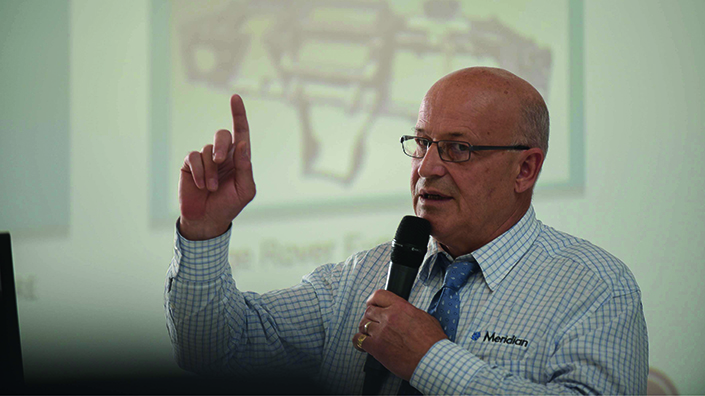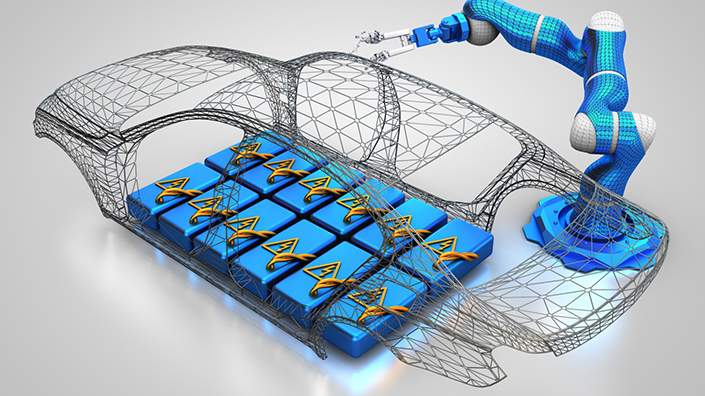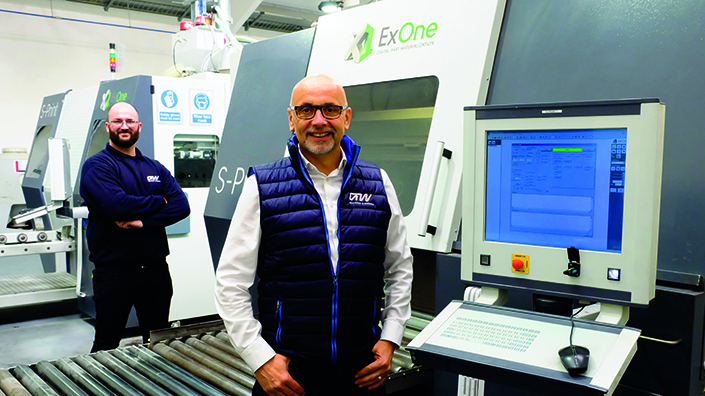Research suggests that carmakers can reduce the weight of a vehicle by 10% and boost its fuel economy by 6% to 8% by using such materials. They need to, because the move from internal combustion engines to electric drivetrains is increasing pressure on body weight.
Benjamin Stafford, from materials search engine Matmatch, says that “with over one billion cars in use across the globe, the drive to reduce harmful emissions has led governments to apply significant pressure on automotive manufacturers to do their part”. He adds that “the high cost of alternative lightweight materials and a resistance from consumers to pay for weight reduction has been one of the biggest setbacks for manufacturers”.
This attitude will undoubtedly change, however. Regulations and initiatives such as the UK’s Industrial Smart Strategy state that OEMs need to reduce the average carbon emissions of their models to 95g/km in 2020 and 75g in 2025. Currently, CO2 emissions are about 140g/km.
Stafford says that electric vehicle (EV) manufacturers “are driving the demand for lightweight materials. Currently, the powertrain of a full-battery EV with a 35.8kWh battery pack and 100kW electric motor is nearly 125% heavier than a standard internal combustion engine vehicle powertrain.”
His comments are consistent with research findings released last May by consultancy Frost & Sullivan. According to its report, Material Technologies Shaping the Future of Electric Vehicles, “The transition from internal combustion engines to electric drivetrains has resulted in an increase in total kerb weight of vehicles; heavily attributed to weight of key components such as battery pack and electric motor. Therefore, manufacturers are forced to compensate for the increase in weight of power systems by reducing the weight of other subsystems such as body and chassis, suspension and interiors.”
The report adds: “Exploring multi-material design approaches using advanced composites and metal alloys is on top of the R&D objectives list for material developers. All-aluminium body-in-white structures are being explored to maintain range with a downsized battery pack. However, this comes at the cost of replacing less expensive high-strength steel and could create new problems due to a more complex recycling process required for aluminium.
“Magnesium has huge lightweighting potential by virtue of being the lightest structural metal. However, high price and poor high-temperature creep resistance have been a concern. Therefore, there is a need to develop processing methods that can provide desirable tensile properties without the use of rare-earth metals as alloying elements. This could help increase the proportion of Mg-alloys in body and chassis parts to 150kg by 2020.”
Championing magnesium
Interest in magnesium is so great that once a year a symposium on the subject is hosted by Birmingham City University. The event has grown out of a partnership between the university and Meridian Lightweight Technologies UK, which claims it is the world’s largest producer of magnesium die-cast components. Their mission is to change the perceptions of magnesium in manufacturing.
The strategic alliance has seen the two organisations working together in the education, research and development of magnesium use. The work places fuel efficiency through weight savings and sustainability at its core. At the heart of this strategic alliance is to investigate making production financially viable for Meridian lightweighting technology, bringing cost savings to its customers.
According to the university, “at 1.8g/cm³, magnesium is the lightest of all structural materials, the eighth most abundant chemical element in the Earth’s crust and is 100% recyclable”. It explains that “magnesium is produced from sea water, brines and magnesium-bearing minerals which offer unlimited reserves, with an estimated 500,000 tonnes produced each year. It is 75% lighter than steel and 33% lighter than aluminium.”

Magnesium provides a number of advantages, says professor Stephen Brown
Professor Stephen Brown, Meridian’s business development manager, says: “Magnesium, designed and optimised in the correct manner, will provide enhanced strength, stiffness and stability, and will deliver a higher specific yield strength and specific modulus than nearly all other structural metals.”
He continues: “Our partnership with Birmingham City University is committed to improving understanding of magnesium and will encourage the automotive industry to consider magnesium as a lightweighting alternative material. The industry is increasing its use of magnesium yearly and our partnership intends to lead the sector, which presently lacks the skills and expertise necessary when designing and developing in magnesium.”
Although aluminium and magnesium are the two most familiar lightweight materials, new processes and composites also offer significant opportunities to reduce the weight of cars.
Craig Knowles is senior manufacturing engineer at the University of Strathclyde’s Advanced Forming Research Centre. He explains that superplastic forming (SPF) of sheet metal is a niche process that enables the manufacture of lightweight components with complex geometries.
Advanced processes
Industrial know-how has historically been the tool of choice to define the superplastic forming process but, by using the most up-to-date material testing, finite element modelling and process methods, the research centre is able to achieve optimal output. This approach is resulting in the realisation of the ultimate potential of the materials and overall process.
Superplastic forming takes advantage of a material phenomenon defined as strain rate sensitivity. Strain rate sensitivity, in conjunction with suitable grain structure and material temperature requirements, allows for elongations of up to 1,000% to be achieved in traditionally difficult-to-form alloys, such as Ti-6Al-4V. This allows for the manufacture of complex shapes while achieving a lightweight component such as those required for aerospace and for very intricate body panels on supercars. The low weight is achieved through making components from a single sheet of material, so removing the need for joining techniques; the use of multiple sheets formed to create a hollow structure or using strong, lightweight alloys that can achieve the required performance with minimal weight.

Light body panels for supercars can be made by using single sheets of material
However, at present the costs are high. SPF presses cost anywhere between £1m and £6m depending on the size, and to achieve the desired material behaviours machines must operate at extremely high temperatures for long periods.
The superplastic forming of titanium alloys is typically performed at 900-930°C. This results in high energy costs, necessitates the use of expensive tool materials and limits the number of parts that can be formed before the die requires cleaning.
As a result, much of the work carried out at the Strathclyde research centre is focused on investigating how companies can eliminate some of the costs associated with SPF by running at lower temperatures and completing the processes in a shorter time, thereby decreasing the energy bill while still reaping the benefits.
Many companies could benefit from adopting SPF technology but the cost of the equipment is a significant barrier. This brings with it an opportunity for kit manufacturers to develop a low-cost, low-tech investment opportunity for the initial kit. Not every company needs the same capability and the SPF equipment manufacturers could recognise this and develop more basic, lower-cost kit that would make the technology more accessible to smaller companies.
Multi-phase potential
Composites could also be used to reduce the weight of cars. Alvant, which makes composites, launched what it calls a “novel and customisable multi-phase material that will bring fundamental new possibilities to design engineers” at the Advanced Engineering 2018 show.
Positioned as a sustainable and capable alternative to titanium and carbon composites, Alvant’s new material looks, at first glance, to be similar to a sandwich panel architecture. However, while it features two skins and a core, Alvant’s ‘one-shot’ process creates one piece of single, continuous, reinforced matrix material with different regions of reinforcement, as opposed to a sandwich solution where separate materials are bonded together. Alvant claims the result of eliminating weak points where the materials interface is significantly increased component strength- and stiffness-to-weight ratios.
Alvant says: “Traditional sandwich materials are typically assembled from carbon composite or unreinforced metallic panes with a variety of honeycomb cores. The metallic pane, or ‘skin’, is typically a flat, 2D panel, while carbon composite varieties can take 3D forms. Alvant’s multi-phase material method ensures the product is more resistant to shrinkage, damage and high temperatures, making it eminently suitable for harsher environments.
“It is also possible to create more complex shapes while reducing the post-processing and assembly times usually associated with sandwich panel construction by as much as 30%.”
Composites have existed in various forms for thousands of years but new technologies are making them more useful. It will be interesting to see how the new multi-phase material is used in automotive manufacturing.
Casting hollow aluminium components

Keith Denholm (centre) is technical director of Grainger & Worrall
Grainger & Worrall is a specialist in complex metals. The firm explains the benefits of casting hollow aluminium components.
The demand for more efficient vehicles is driving innovation throughout the supply chain. Not only are original equipment manufacturers (OEMs) placing more emphasis on aerodynamics and developing more efficient propulsion systems, but lightweighting techniques are becoming more critical.
“The strategy for lightweighting now encompasses the entire vehicle concept, and is integral to improving emissions, performance, handling and fuel economy,” says technical director Keith Denholm. “One of the biggest opportunities to drive weight out of a vehicle lies at the castings stage, both during prototype and production, to deliver lighter engines, powertrains and structural components.”
Denholm and his team are working with vehicle OEMs to develop lightweight chassis, powertrain and drivetrain components. Grainger & Worrall has developed a fast and reliable method for casting hollow aluminium components, to produce high-pressure die-cast models at a lower cost than by using traditional hard tooling. “With OEMs implementing electrification strategies, weight reduction is even more essential, as it contributes to increased battery range, making electric vehicles a more viable proposition for motorists,” says Denholm.
“OEMs can now save hundreds of kilograms by using hollow castings rather than solid ones. Hollow castings are typically more common in aluminium than in steel, as the casting process is simpler. However, we anticipate seeing use of both materials increase.”
Grainger & Worrall’s processes have been finely tuned following participation in the Lightweight Energy Absorbing Aluminium Structures for Transport (LEAAST) programme, a £2.2m research project funded by Innovate UK. The initiative sees the company working alongside prominent research institutions to develop lightweight aluminium crash management systems for automotive applications.
Content published by Professional Engineering does not necessarily represent the views of the Institution of Mechanical Engineers.